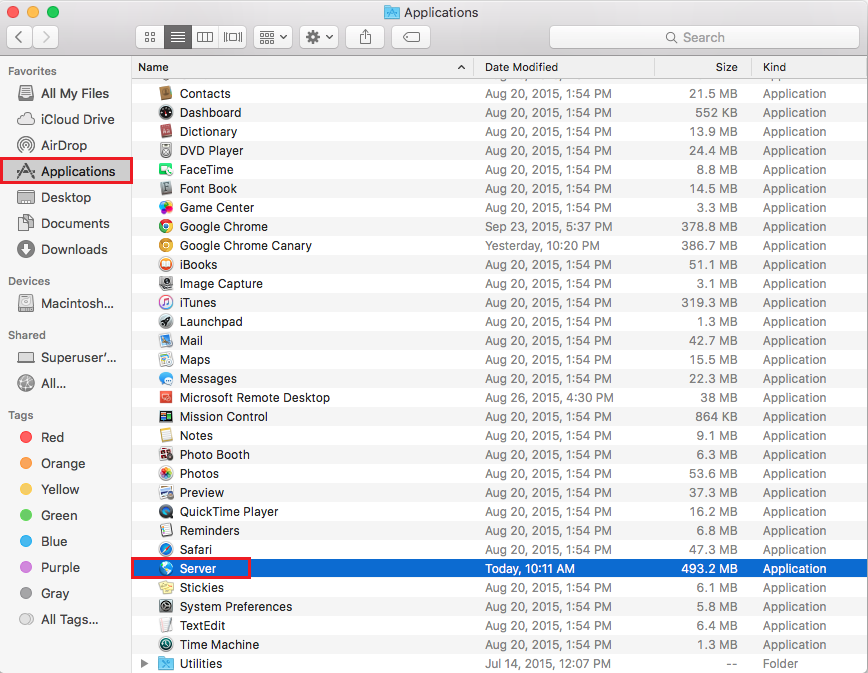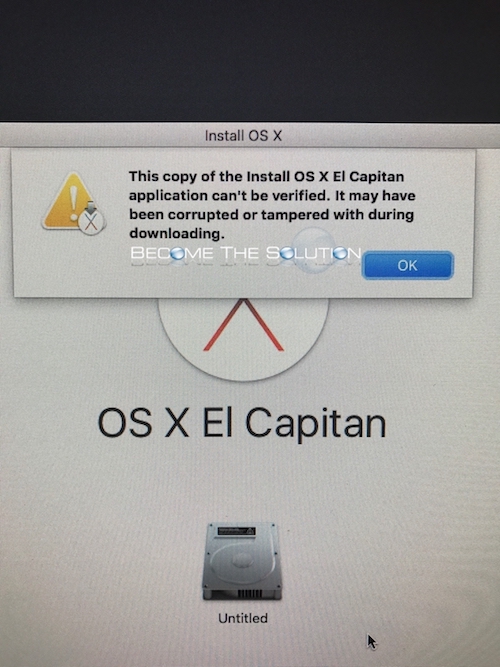- I am trying to upgrade an older iMac (2008) from OS 10.6.8 to El Capitan for a disabled client who really needs to use a Mac instead of a PC!
- EveryMac says it can handle El Capitan if I upgrade RAM. It has 4GB now.
- I have an Installer file from my own Mac (always keep them when I upgrade). I made a bootable flash installer that mounts and seems to have the proper files, but it won't show up on either Mac on restart holding option key; nor in the Startup Disk list. So, I figured writing to the flash drive must have failed.
- I partitioned an external hard drive and redid this:
'sudo /Applications/Install OS X El Capitan.app/Contents/Resources/createinstallmedia --volume /Volumes/MyVolume --applicationpath /Applications/Install OS X El Capitan.app'
- It seems to work (again) in Finder AND it shows up as a boot option on restart (holding option key), but when I select Install OS X I get an error that the installer cannot be verified. I can't get it to work.
- So, I figured my installer must have gone bad, even though I successfully upgraded my own Mac with it, and have since upgraded mine to Sierra.
- Using the App Store I can get to El Capitan, but it will not allow me to download it on my Mac because the system is too new, and I don't want to download it to the old Mac because I want to use an external drive to do a clean install; not an upgrade on the old one.
- Any advice?

How to fix 'This copy of the install OS X El Capitan application can't be verified. It may have been corrupted or tampered with during downloading. Hindi Me100% kam karega. 'This copy of the OS X EL Capitan application can't be verified it may have been corrupted'. 'This copy of the OS X Yosemite applic.
IMAC (RETINA 5K, 27-INCH, LATE 2015), macOS Sierra (10.12.3)
- Replaced the hard drive on an old 2007 iMac. Previously had this machine running 10.11, with no issues. Downloaded the El Capitan installer from the webpage, and used the createinstallmedia command to make a bootable USB drive. Everything seems to proceed normally, until 'This copy of OS X El Capitan can't be verified.
- Jul 22, 2021 FIX This Copy of the Install OS X El Capitan Application Can’t be Verified. If the issue is with your Computer or a Laptop you should try using Restoro which can scan the repositories and replace corrupt and missing files. This works in most cases, where the issue is originated due to a system corruption.

Posted on Feb 28, 2017 9:53 PM
“This copy of the Install OS X Mavericks application can’t be verified. It may have been corrupted or tampered with during downloading”

The reason why this insane message is happening is because as of February 2016, the security certificates that validate these Mac OS X installs seems to have expired. What this means is that when you try to install Mac OS X Mavericks, Yosemite or El Capitan from any USB or external source, the certificate checking process will render your copy of the installer null and void. You will then get the error “This copy of the Install OS X Mavericks application can’t be verified. It may have been corrupted or tampered with during downloading.”
Thankfully, as annoying as this is, there’s a pretty easy fix in the Terminal, located on every installer of Mac OS X. Here’s what to do:
- Boot into the OS X installer as you would normally do (hold down option at boot and choose your installer
- Disconnect the ethernet cable if it’s connected and turn off wi-fi from the networking menu
- Open the utilities menu item and choose “Terminal”
- When the Terminal appears, simply type in the following command: date 0202020216
- Hit return and you will now see the new date as read back by the system
- Quit the Terminal
- You can now begin to reinstall OS X from the main screen as you did before
El Capitan Cannot Be Verified For A
Why does this work in the Mac OS X Terminal?

The reason why this works is that you are actually turning your computer into a time machine–and you are telling it to go back to the date February 2nd, 2016. This tricks the certificate into believing that the date is now in the past and allows the installation to resume. You can also redownload any installers to get the new certificates, which are located in your purchase history on the Mac App Store. You would then have to make new installer disks with these new downloaded installers.